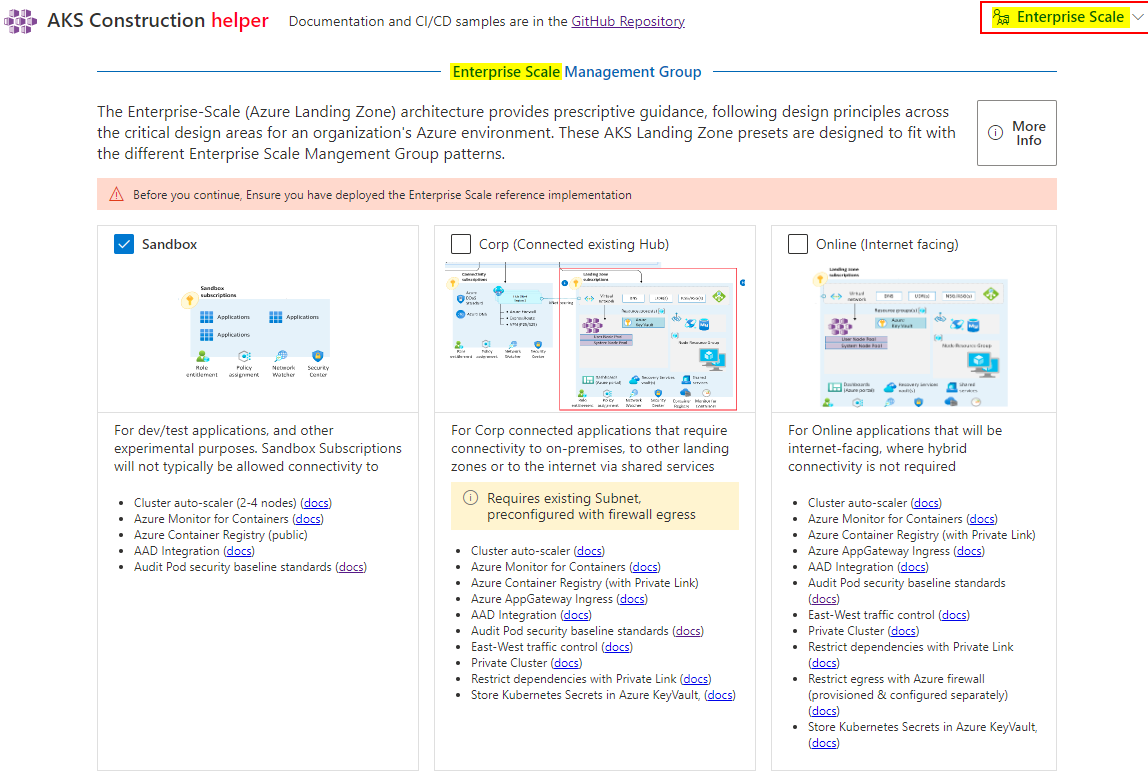After designing and architecting AKS the next step is to deploy your cluster/s. It is ideal to build your AKS deployments out as code.
This means taking your Azure infrastructure & AKS cluster/s design and scripting them as IaC (Infrastructure as Code). Scripting the AKS deployment vs manually deploying gives you documentation as code, standardization, & a templatized deployment for repeatability. You can deploy this code as is, place it in a pipeline for ease of deployment, in inner-source, or in a service catalog for access by multiple teams.
Microsoft has built a tool named the AKS Construction helper to accelerate building out your IaC for AKS. This tool is not as well-known as it should be. I wanted to blog about this tool to share this great resource that will save you tons of time. The AKS Construction helper was originally launched by Keith Howling of Microsoft. The core contributors to this tool have been Gordon Byers and Keith Howling with contributions from others as well.
The AKS Construction helper unifies guidance provided by the AKS Secure Baseline, Well Architected Framework, Cloud Adoption Framework, and Enterprise-Scale. It also is part of the official AKS Landing Zone Accelerator (Enterprise Scale). The AKS Construction helper lets you configure your AKS deployment using wizard/form style selections. After you complete your selections the tool gives you IaC code that you can copy to perform the AKS Deployment/s. You can get code for Az CLI, a Github Actions workflow, Terraform, or a Parameters file that can be used with an ARM Template.
Let’s go ahead and take a tour of the tool.
The tool lets you select Operations Principles or Enterprise-Scale path for configuring the options.
This helps narrow down the overall design requirements of your AKS deployment.
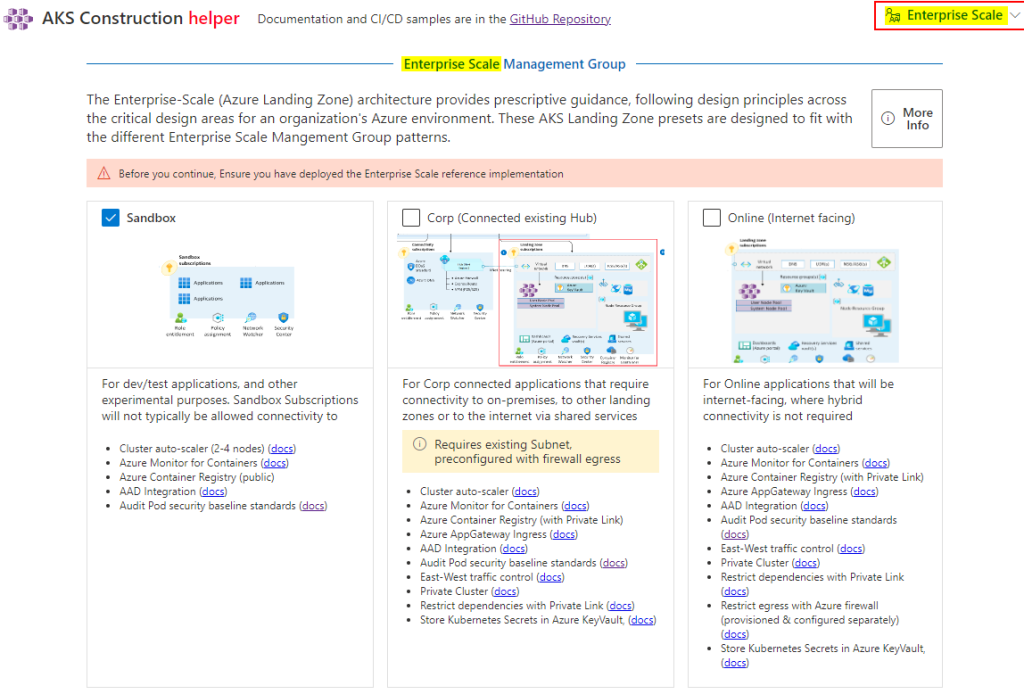
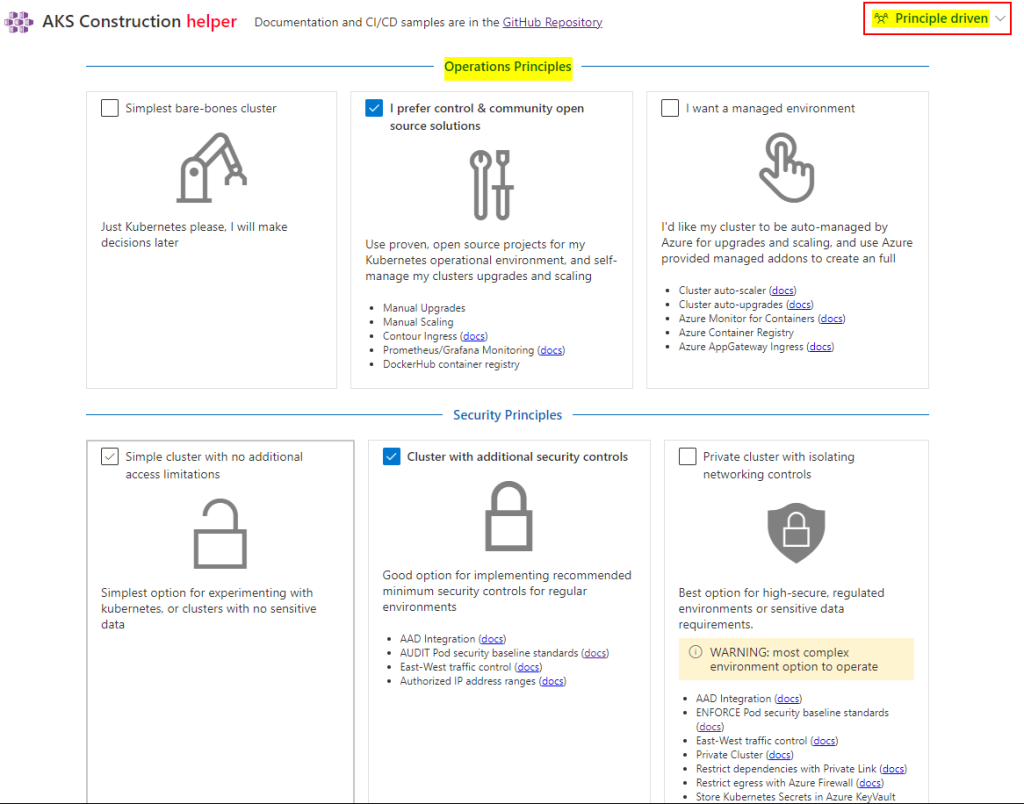
The next section of the AKS Construction helper is to fine-tune your AKS deployment. This gives you the chance to tweak things like the cluster name, K8s version, resource group, region, to be created, IP and Cider, initial RBAC, SLA, autoscaling, upgrade configuration, cluster networking, add ons such as an ingress controller (App Gateway, NGINX, etc), monitoring such as Azure Monitor, Azure policy, service mesh, secret storage, Keda, GitOps with Flux, and even has a few options to deploy some sample apps. This is done across 5 tabs in the Fine tine and Deploy section.
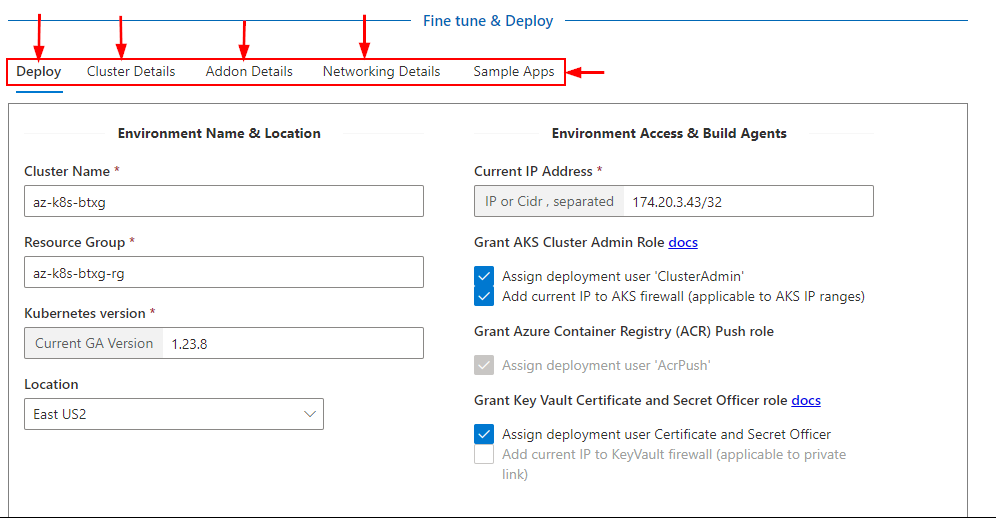
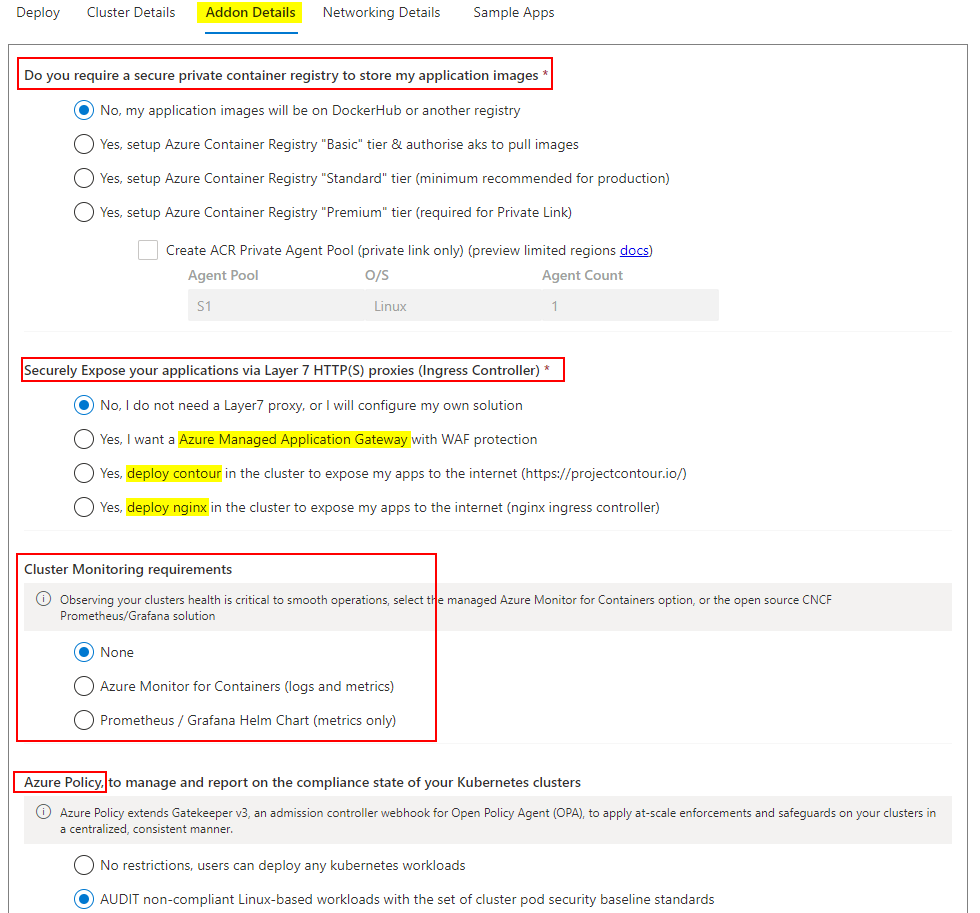
After you have set all of the configurations for your cluster there is code available for you to copy on the Deploy tab. Again you have options for Az CLI, a Github Actions workflow, Terraform scripts or an ARM Template Parameters file. Running the deployment code will deploy your AKS cluster exactly how you have it configured in the AKS Construction helper tool.
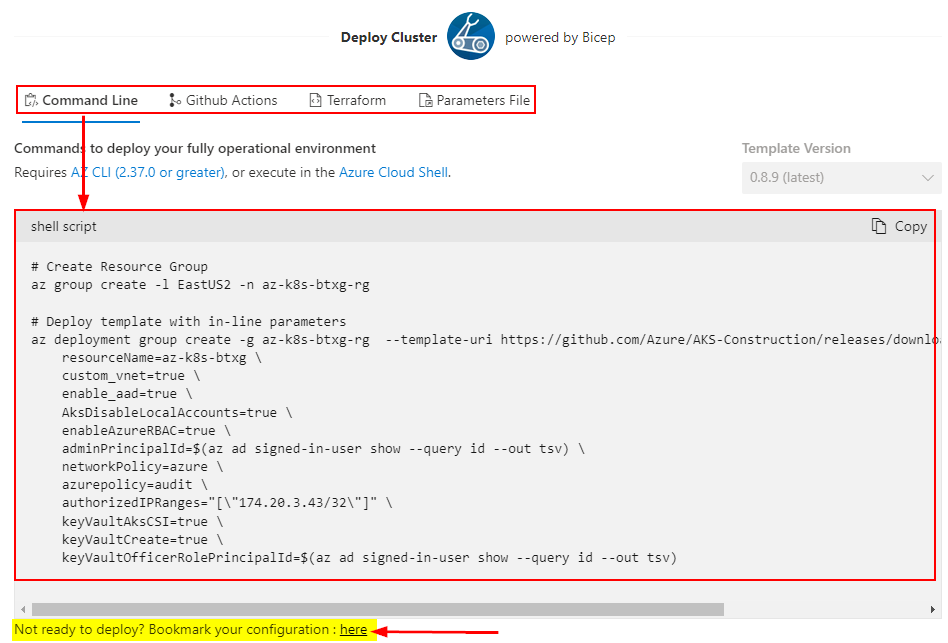

The URL will look similar to this:
You can access this URL at any time to pick up where you left off with your AKS deployment configuration.
That brings us to the end of this blog post. Stop wasting time, head over to the tool, and start using this for all of your AKS Deployments. Here are the links for the tool:
The wizard-driven tool can be found here:
https://azure.github.io/AKS-Construction
The GitHub Repository for the tool can be found here:

